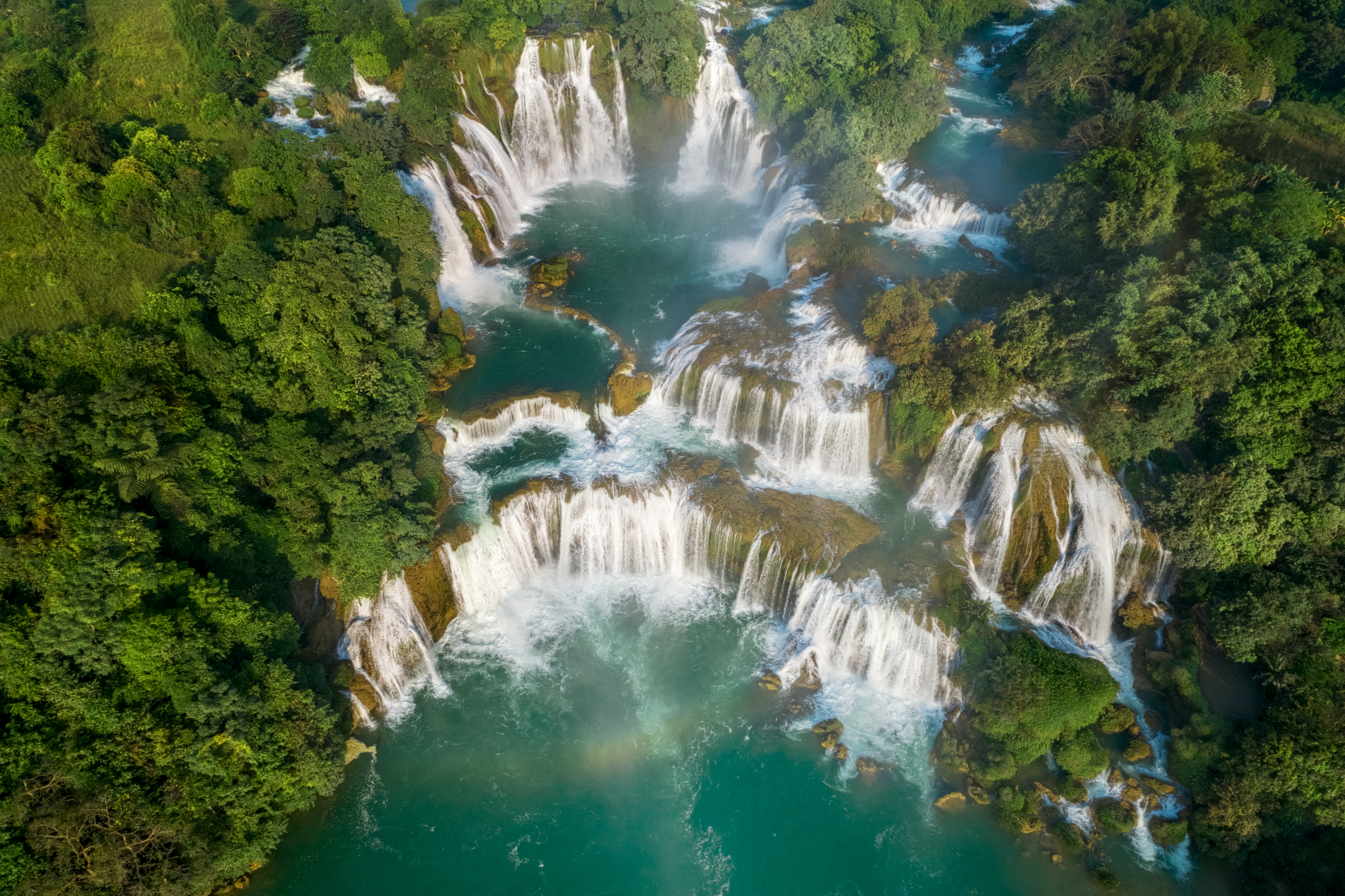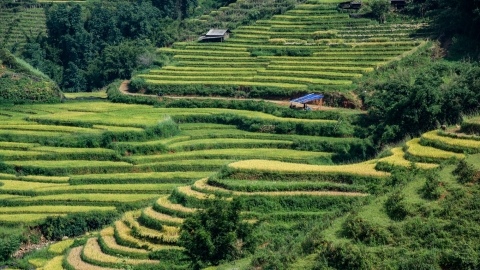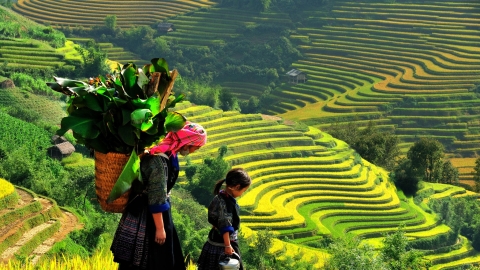East: Path to Wonderland
When it comes to Cao Bang tourism, everyone immediately thinks of the most famous scenic spot here: Ban Gioc waterfall. Therefore, I chose this as my first stop in my journey to explore the mountains and rivers of Cao Bang.

Located in Dam Thuy commune, Trung Khanh district, Ban Gioc waterfall is about 80 km from Cao Bang city center. This is one of the most beautiful and majestic waterfalls in the world located on the border between countries, comparable to Iguazu Falls, Victoria Falls and Niagara Falls. In the middle of the waterfall, there is a large mound of land covered with trees, causing the water to split into three main streams and divide the waterfall into two easily recognizable parts with a total width of about 300 m. The secondary waterfall is completely in Vietnam and has a small amount of water. The main waterfall, with a large amount of water, is located between the Vietnam - China border. At the foot of the waterfall is the gently flowing Quay Son river, on both banks are green grass patches, in the distance is a poetic forest shadow. Luckily, I visited Ban Gioc waterfall on a beautiful sunny day, the sunlight shining through the white foam creating a magical rainbow effect like in a fairyland.
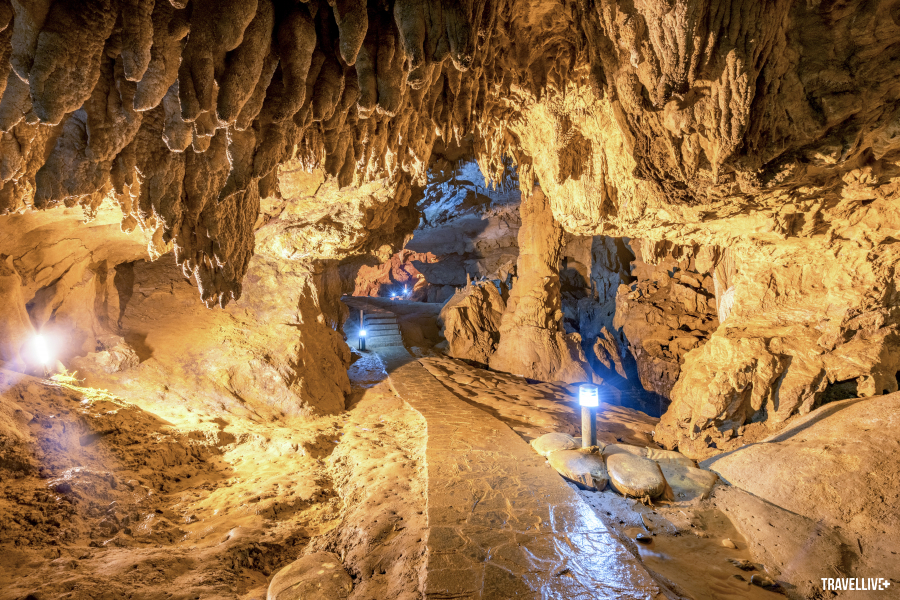
About 3 km from Ban Gioc waterfall is Nguom Ngao cave. Nguom Ngao means “Tiger Cave” in Tay language. The underground stream in the cave flows murmuring day and night, emitting echoes like a tiger’s roar, hence the name. This limestone cave is more than 2 km long, divided into many chambers, floors, stairs, corridors of all sizes, some sections are as wide as a hall, some are narrow and you have to bend down on your knees to get through. In the cave there are many stalactites and stalagmites of strange shapes, forming terraced fields, waterfalls, ships, lotus platforms, towers...
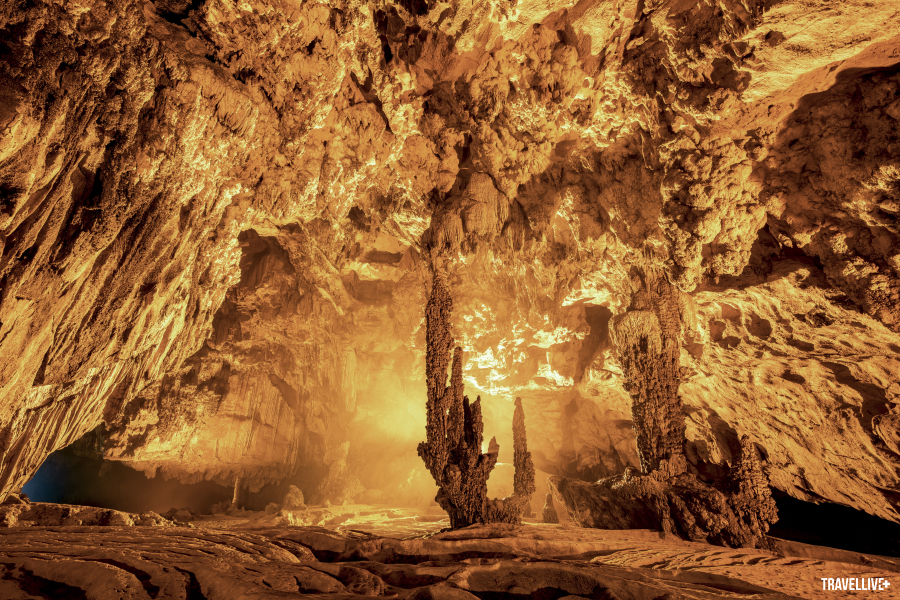
More specifically, scientists have found in Nguom Ngao cave fossils of coral and sea lilies formed in ancient seas, hundreds of millions of years ago. Looking up at the limestone domes hanging down in the shape of giant jellyfish, I cannot help but imagine a distant past, when this mysterious cave in the lofty mountains and waters was once a magnificent aquarium with many soldiers, shrimps and fish...
On the way to the next attraction, the Mountain God's Eye, I stopped by some ethnic minority craft villages.

Those are Phia Thap incense village and Pac Rang blacksmith village of the Nung An people. The life of the people here is still difficult, except for farming, handicrafts are their only source of income. However, the products they make can make every tourist admire because... they are so skillful, so high quality but... so cheap! Another village located very close to Ban Gioc waterfall and Nguom Ngao cave is Khuoi Ky stone village of the Tay people. Phia Thap village makes incense, Pac Rang village forges metal, but Khuoi Ky stone village does not mine and manufacture stone. Khuoi Ky is called a stone village thanks to the stone stilt houses, leaning against the rocky mountain, overlooking Khuoi Ky stream. Fences, dams, mills, stoves... are all made of stone, creating a simple yet ancient look like a fortress tinged with the legend of the border region.

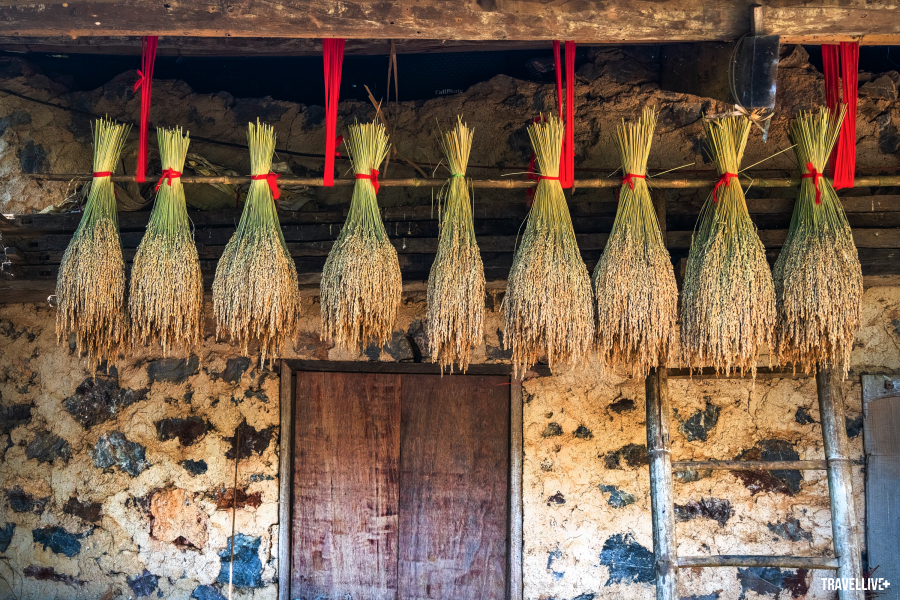
I stopped at the Mountain God's Eye at sunset. It was not a mistake to choose this time, I just saw the splendid afternoon rays of sunlight shining straight into the mountain god's eye. This is actually a circular hole in the mountain, more than 50 m in diameter. The Tay people call this place Phia Piot, which means "Hole Mountain". Right below the towering and proud Mountain God's Eye are peaceful green rice fields and corn fields, here and there are scattered figures of people herding buffaloes and horses to the stables. A Tay woman told me that if I visited this place during the rainy season, I would be able to admire an even more beautiful scene, when the valley at the foot of the mountain was flooded with blue water reflecting the mountain god's image in the sky and clouds...
West: Mountains of Change
One morning, waking up on a high mountain, looking out at the vast green tea hills, I took a deep breath of fresh morning air. Just that was enough to know that the tea here was grown cleanly and without any harmful chemicals. Sipping a piece of fragrant rice cake, sipping a sip of green tea at this Phia Den eco-tourism resort, I felt like I was still in a poetic land, just reaching out to catch the golden sunlight and white clouds.
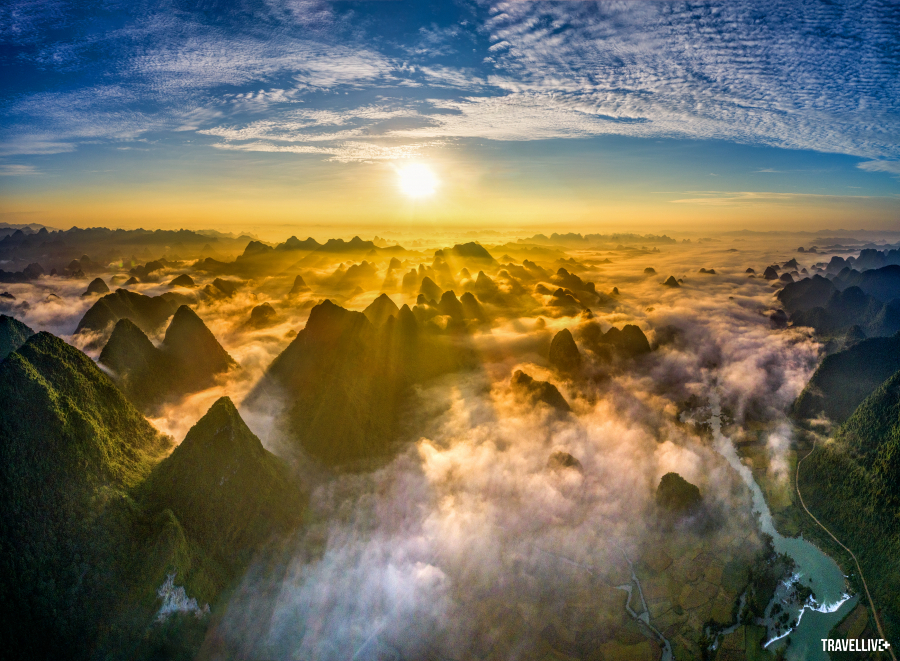
Cao Bang is like that, all four directions are just mountains, but the scenery is like no other place. A majestic mossy Phia Oac region is submerged in a vast sea of fog, hiding the small, peaceful houses of the Tay, Nung, Dao people... The vertical Tinh Tuc hanging valley seems to frame the traces of a million-year glaciation in the flow of time. Lung Rong Mountain is jagged with limestone "thorns", winding between forests and streams, it seems that in a moment I can see the ancient beasts move and soar into the thousands of clouds. Or more modestly, Mao Ga Mountain is interwoven with rugged limestone ranges and gently sloping shale, bringing the simple but no less brilliant beauty of the terraced fields shining with golden light every autumn.
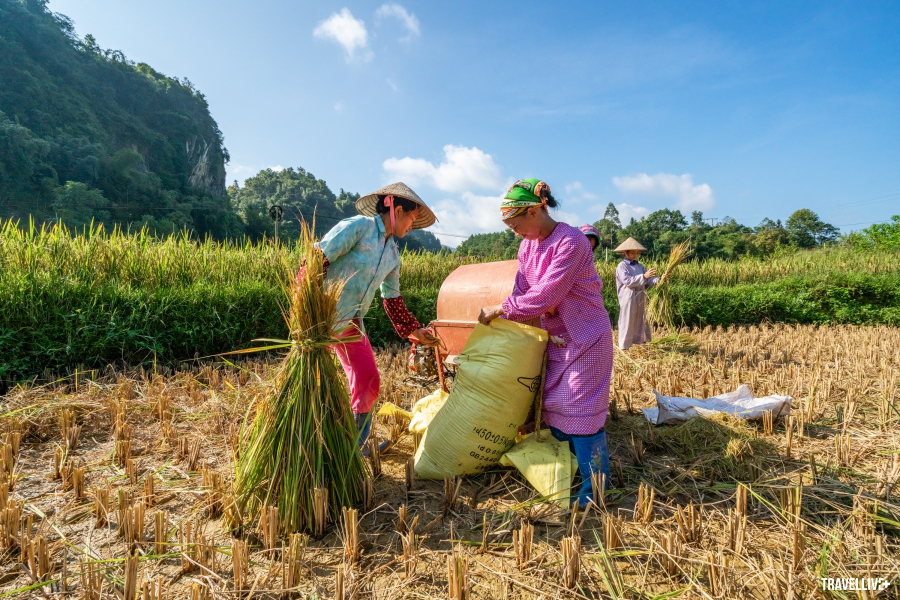
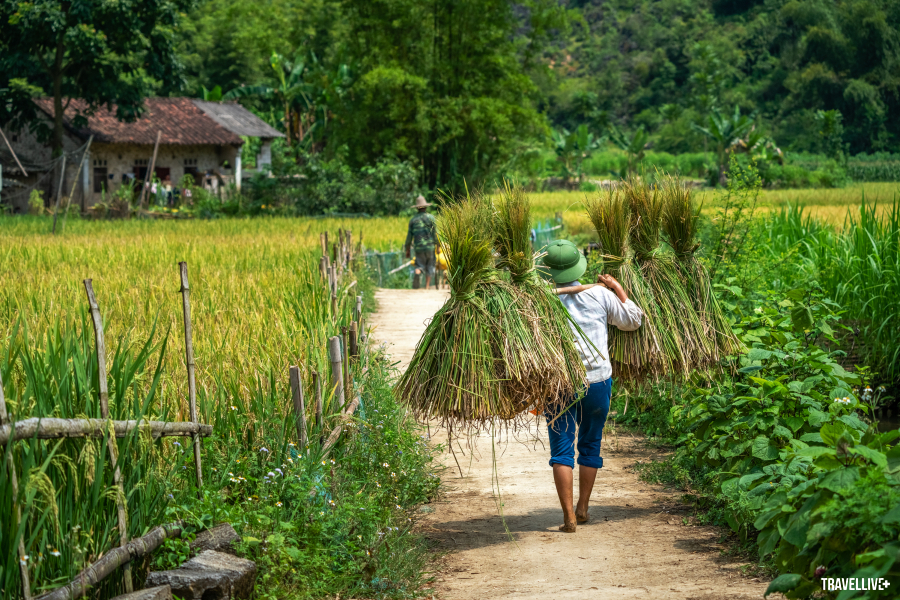

These beauties are a gift from nature to Cao Bang. Since then, generations of people have carved mountains and forests, interwoven terraced fields, tea plantations, salmon farms, villages and cooperatives.
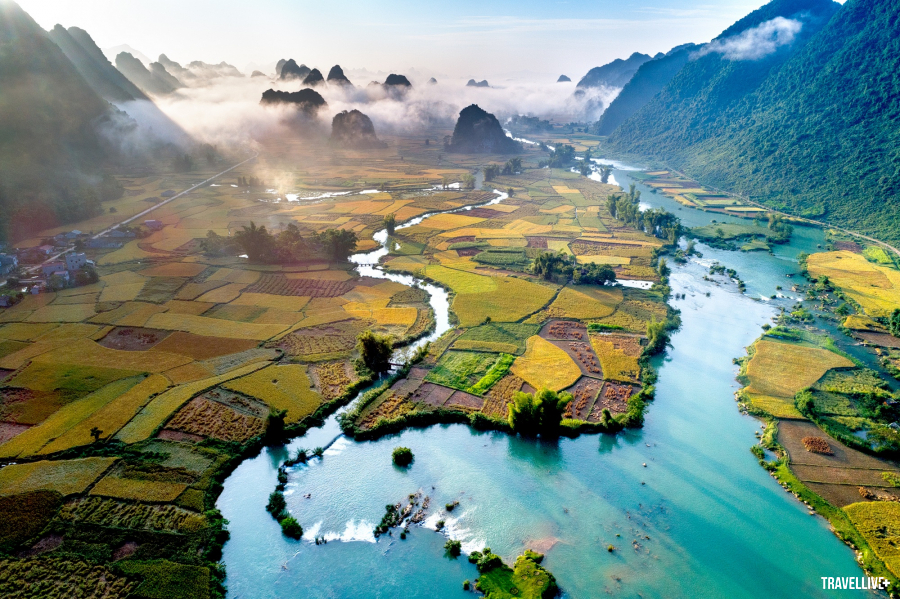
I had the opportunity to visit the Kolia Tea Plantation as mentioned above and the Sunny Salmon Farm, both located on Phia Den Mountain. I sincerely recommend that if possible, you should take some time to visit this place.
Tea trees and fish are raised thousands of meters high as if they have been filtered through the mountain air, both clean and fragrant. Just a taste of it and you will feel the difference from the food and drinks in the lowlands. Or the embroidery workshop of the Dao Tien people in Nguyen Binh district is also a very worth-visiting destination. You cannot taste the "specialty" embroidery here, but just watching the hands of the ladies quickly embroidering brocade and printing beeswax patterns is enough to "fill your eyes"!
North: Journey to the roots
Not only possessing beautiful landscapes with rich and unique cultural identities of ethnic minorities, Cao Bang is also a place that witnessed many important historical events, associated with the activities of President Ho Chi Minh, General Vo Nguyen Giap and the Vietnam People's Army in the pre-uprising period. Among them, the most prominent is the Pac Bo Special National Monument. You can leisurely walk along the Ho Chi Minh trail or hire a tour guide, not because the road is too difficult to travel so you will need a guide, but to listen to stories and local legends about a heroic revolutionary history.
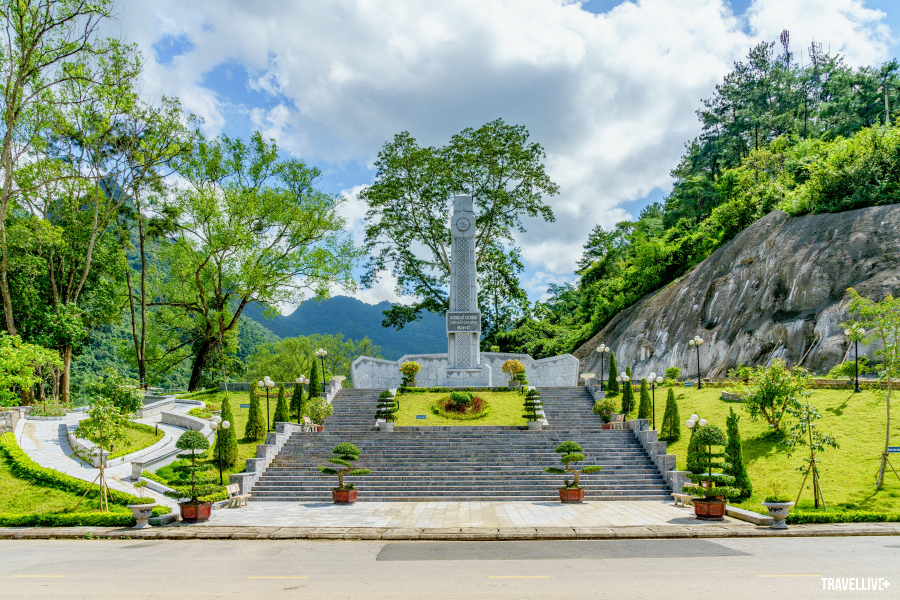
Along the roadside, Tay and Nung women were selling fragrant local snacks. I bought a bag of hot candied chestnuts, then walked and admired the clear, jade-green Lenin stream, softly winding at the foot of Karl Marx Mountain, towering like a wall. Old fig trees stretched close to the water, obscuring the small path of about 30-50 steps leading to Coc Bo cave. The cave is small, dry and quite private, with an entrance to the second cave. The main cave entrance was not intact after the war but has now been restored, and inside the cave, the limestone stalactites as well as the simple bed and the simple kitchen are still intact, reminding me of Uncle Ho's time of "going to the stream in the morning and going to the cave in the evening". Coming out of the cave, you will immediately see the source of Lenin stream, the water flows strongly and is quite clear, from here the cave is named "Coc Bo", which means "source" in the Nung language. Right next to it is the "unsteady stone table" where Uncle Ho "translated Party history" during his secret days here.
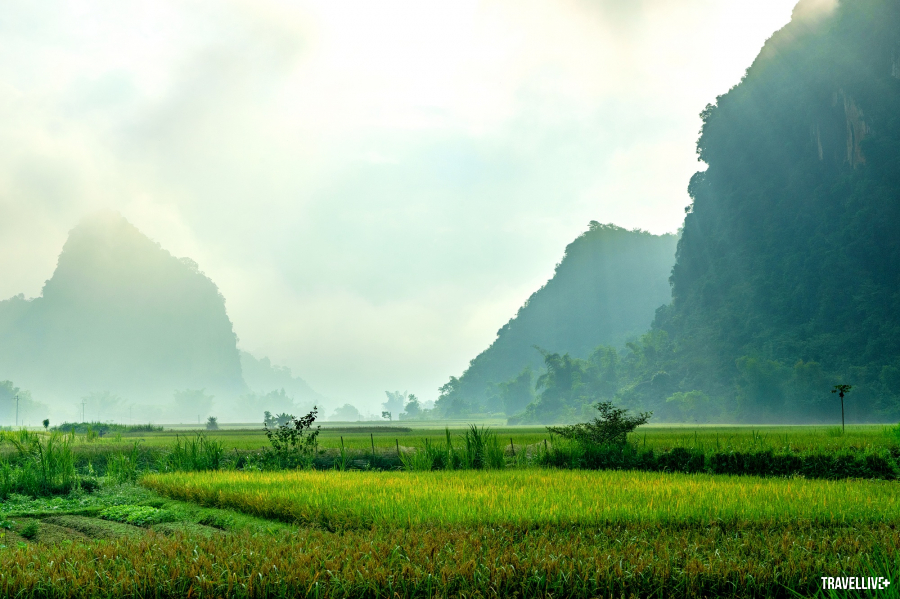
The further we went towards the end of the road, the more the gloomy mountains and forests narrowed, the terraced fields, the grasslands, and the cornfields expanded, immense in the peaceful silence of the afternoon. A few Tay and Nung children wearing red and floral shirts stood by the roadside, holding half-eaten potatoes and cassava in their hands, smiling at me with their mouths and eyes. That evening, stopping at a homestay halfway up the mountain, I also enjoyed a bit of the atmosphere of "eating at the local people's house, sleeping at the local people's house". The Tay host was extremely warm and hospitable. The braised pig's feet with chestnuts, smoked buffalo meat, stir-fried bamboo shoots... were so delicious that even now, just mentioning them makes me crave them!
After three days of escaping the bustling and noisy city, returning here to the source of flowing water to watch the clouds and sky drift, I felt strangely peaceful and light-hearted...
MORE INFORMATION
- Trip:Cao Bang is about 280 km from Hanoi. From Hanoi, you can follow National Highway 3, through Thai Nguyen, Bac Kan to Cao Bang or follow the route QL1 - Lang Son - QL4 - That Khe, Dong Khe - Cao Bang. Tourists can also buy bus tickets to Cao Bang at bus stations in the above provinces. If traveling by personal vehicle (motorbike, car), you need to pay attention to safety: brakes, tires, chains... and bring all necessary documents. You should bring some common vehicle repair tools because the road from Cao Bang city to Ban Gioc is quite difficult to travel.
- Time: In each season, Cao Bang has its own beauty. However, the best time to visit Cao Bang is August and September when Ban Gioc waterfall flows with clear blue water, also the time when the rice is ripe and golden, and in November and December - when buckwheat flowers and wild sunflowers bloom all over the mountains and forests.
- Accommodation:The system of motels, hotels and resorts in Cao Bang is quite diverse. You can choose to book a room at a homestay, motel or budget hotel with prices from 200,000 - 600,000 VND/night or Ban Gioc Riverside Resort with prices from 1,000,000 VND/night.
- Cuisine:Roasted duck, roasted pork with honey leaves, smoked sausage, dried beef, Gam River fried fish, Ban Gioc agarwood fish, fern, bamboo shoots, canarium sticky rice, sour pho, Trung Khanh chestnuts, ant egg cake, rice rolls, rice cakes... are dishes not to be missed.
Reference routes:
- Eastern route: Ma Phuc Pass - Mountain God's Eye - Phia Thap Incense Village - Pac Rang Forging Village - Ancient Ocean and Ancient Continent Relics - Ban Gioc Waterfall - Nguom Ngao Cave - Khuoi Ky Stone Village
- Western route: Lang Mon ancient coral relic - Dao Tien embroidery workshop - Mao Ga mountain - Long Rong - Tinh Tuc hanging valley - Phia Oac - Salmon farm - Kolia tea plantation
- Northern route: Stone Garden - Lung Noi embroidery workshop - Stone chrysanthemum fossil site - Ho Chi Minh route - Pac Bo relic site





